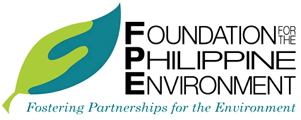Coral Reef Recovery in Typhoon-Damaged Coral Reefs
- Proponent: Silliman University-Institute of Environmental Management Science
- Amount: PhP 1,954,500
- Project Start Date: April 08, 2015
- Project End Date: April 08, 2016
- Grant Type: Research Grants
- Area: Visayas
- Grant Status: Past
Project Goals and Objectives
The project aims to document recovery rates of reef fish in typhoon-damaged reefs, and identify factors influencing such results, to scale up coral reef rehabilitation in select marine protected areas (MPAs) in Siquijor and Apo Island so as to revert coral reef degradation, fish stocks declines, and biodiversity loss.
Outputs and Outcomes
- Participatory coral reef and biodiversity monitoring and rehabilitation in 8 Siquijor marine protected areas (MPA), and 5 Apo Island sites (Two of these MPAs, and the other three fished areas)
- Fabricated and deployed 30 fish habitat modules for Apo Island Marine Sanctuary and Siquijor
- Continued repair and maintenance of installed and deployed coral reef rehabilitation (CRR) and reef fish recovery (RFR) tools
- More than 15 members of the provincial monitoring team (PROMOTE) trained on CRR-RFR methods and monitoring
- Capacity building of selected MPA management partners for supplemental livelihood ventures through ecotourism.
Sustainability Plan/Measures
- "Large scale damage requires large scale, multi-sectoral partnership. WIth a coral reef area of 117 hectares, CRR manpower and support is a partnership of volunteers (US Peace Corps and the dive sector), Barangay and Municipal LGUs, the Province of Siquijor (OPA and PNP), NGOs (Coastal Conservation Education Foundation, or CCEF, and FPE)"
- "The long-term implementation successes of this project can be attributed largely to the multisectoral cooperationa nd the active engagement of stakeholders and partners. The role of local communities and LGUs in coral reef recovery cannot be underestimated, and should be taken seriously for recovery to commence and be sustained, towards climate change resilience." (Estacion & Maypa, 2016)
Lessons Learned
"As mentioned in the first trimester report, coral reef recovery after a typhoon damage is none too slow. It can take five to 80 years (e.g., Grigg and Maragos 1974, Dulvy et al. 1994, Coles et al. 2007, Birkeland et al. 2013) depending on the level of damage, the ecological and oceanographic factors (e.g. connectivity and recruitment, density and biomass of fish and invertebrate grazers and the level of herbivory) and anthropogenic impacts in the area. It was also discussed that some damaged reefs may never recover (e.g., Hughes and Conell 1999, Doropoulos et al. 2014) if subjected to pollution and destructive fishing such as blast fishing, trawl fishing, or the use of toxic chemicals such as cyanide, insecticide, chlorine and others..."
"The rapid rate of climate change, disturbance, and the continued degradation of coral reef ecosystems demand immediate, innovative, and effective solutions to accelerate coral recovery processes and build the effectiveness of local management. Thus, the local government and local communities must engage and support initiatives that mitigate coral reef degradation now."

 DISPLAY CALENDAR
DISPLAY CALENDAR